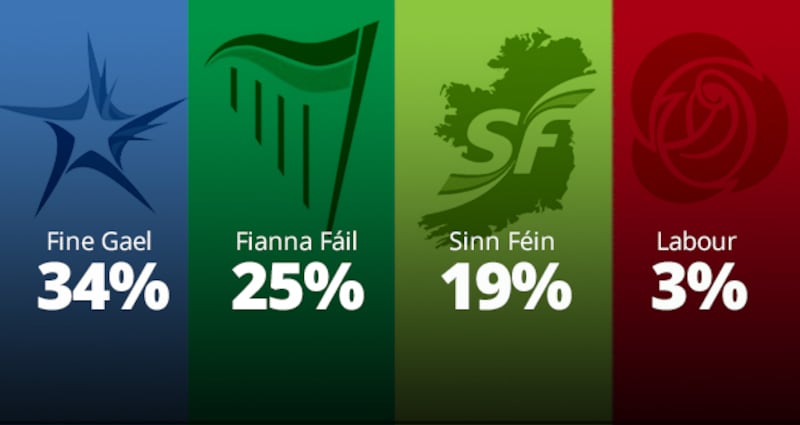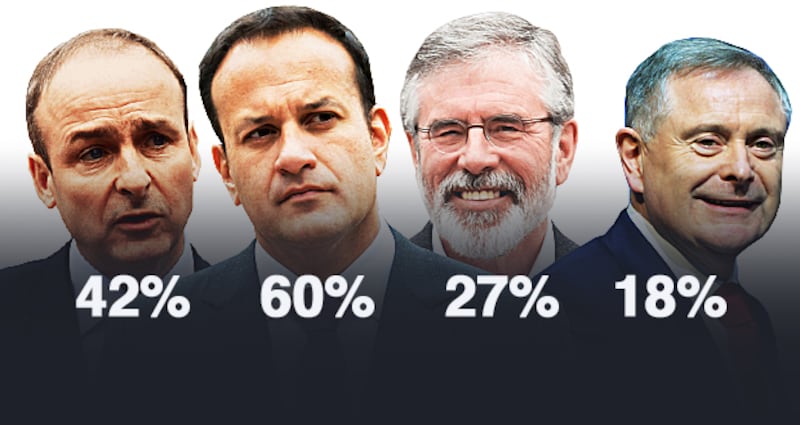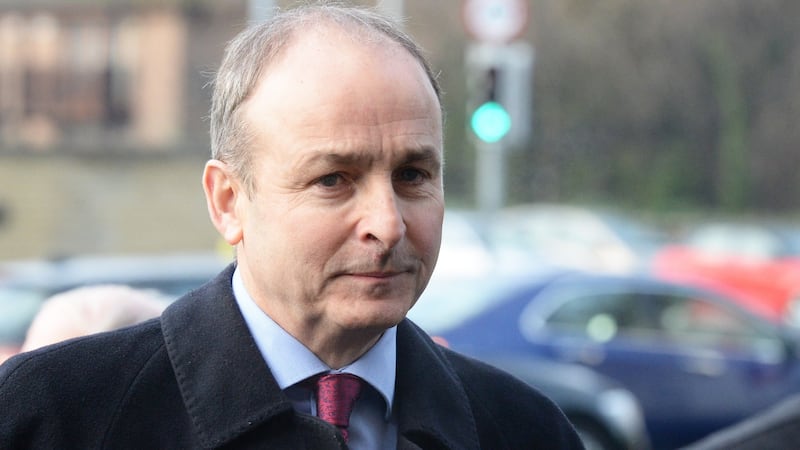The first Irish Times/Ipsos MRBI poll of 2018 has messages of both caution and encouragement for the Government and its young leader.
The steady trend of Fine Gael gains that was a feature of the polls since the summer of 2016 has come to a halt, reversing slightly by two points, from 36 per cent at the end of last year to 34 per cent today.
Against that sobering news, however, must be placed the slightly intoxicating measures of the Taoiseach’s approval, the Government’s approval and the sense among voters that country is generally on the right track.
Yes, Fine Gael falls back by a couple of points, within the margin of error but noteworthy all the same because it ends that long series of increases in support for the party.
They seem to think Varadkar's different. In an age of impatience with and hostility to conventional politics, this is quite an asset
But this fall comes after a five-point jump in the December poll, and leaves Fine Gael still nine points ahead of its chief rivals in Fianna Fáil. Put it another way: if last month's 36 per cent was Fine Gael's best number in an Irish Times poll since 2011, this month's 34 per cent is the party's second best number since 2011.
Government satisfaction
Other numbers in the poll make happy reading for Government Buildings. Satisfaction with the Government rises by three points to 44 per cent – the highest level attained by Fine Gael since it won the 2011 general election. Even more strikingly, Taoiseach Leo Varadkar's personal rating rises by seven points to 60 per cent. You have to go back to 2007 – in the heyday of Bertie Ahern – for a similar figure for a taoiseach. The proportion of voters who think the country is generally on the right track rises marginally to 58 per cent.

Here is the engine that could drive Fine Gael’s numbers higher. Although it would be hard to point to specific policy areas where Varadkar has put his stamp on what the Government actually does, clearly voters are impressed with his performance so far.
Perhaps they like his style, his youth, the clearer mode of communication than that employed by his predecessor. The poll doesn’t tell us. But its message is clear in one important respect: voters are disposed to give Varadkar a favourable hearing. They seem to think he’s different. In an age of impatience with and hostility to conventional politics, this is quite an asset.
Sinn Féin support is strongest among younger and working class voters – precisely the cohorts which are less likely to vote
This may pass, or it may be the start of a bigger change. The coming months will show us. It’s likely though that if it is to be part of a bigger realignment, Varadkar will have to give voters something more substantial to hang on to than a change of image and style. In the long run, substance still matters more than anything else. For now, though, Fine Gael’s young leader – he turned 39 last week – is riding high.

Varadkar threat
For Fianna Fáil, preoccupied this week with internal divisions over abortion, the poll reiterates the Varadkar threat. Party chiefs will be relieved at the slight Fine Gael fallback but the general picture established last month doesn’t change much: Fianna Fáil is substantially behind Fine Gael.
It's true that Fianna Fáil has an easier route to seat gains in many constituencies; and its leader demonstrated in the last election that he is a formidable stumper, capable of bending a campaign to his will. But the numbers also show he is now facing a much different opponent than Enda Kenny. If Micheál Martin was bullish enough about an election to force Varadkar to back down before Christmas, there is little enough in today's numbers to bolster his confidence.
In his final Irish Times poll as leader of Sinn Féin, Gerry Adams sees his party holding steady and his own rating decline slightly. All eyes will be on his successor to see whether she can change the rather settled picture of Sinn Féin support, which tends to trundle along in the high teens, but underperform at election time. Sinn Féin support is strongest among younger and working class voters – precisely the cohorts which are less likely to vote. Unless Mary Lou McDonald changes that, Sinn Féin will have a turnout problem.

At 18 per cent, Independents and others see their support rise slightly by two points from the December poll. That number, of course, is made up of small parties and Independent TDs scattered across the country, making it hard to reach any definitive conclusions about the dominant trends among and between them. But with their vote having dropped by a more than a third since the general election, it seems certain that there will be fewer Independent and small party TDs in the next Dáil.
That retreat among the Independents will be – on the evidence to today's numbers – to the advantage of the big parties, but not of the Labour Party, which scrapes in at 4 per cent today.
Crowded out in the Dáil and the media, dwarfed by its rivals, it’s hard to see any comeback for Ireland’s oldest political party today. Labour starts 2018 the way it ended 2017 and 2016: with its future as a serious player in Irish politics in the gravest doubt.














